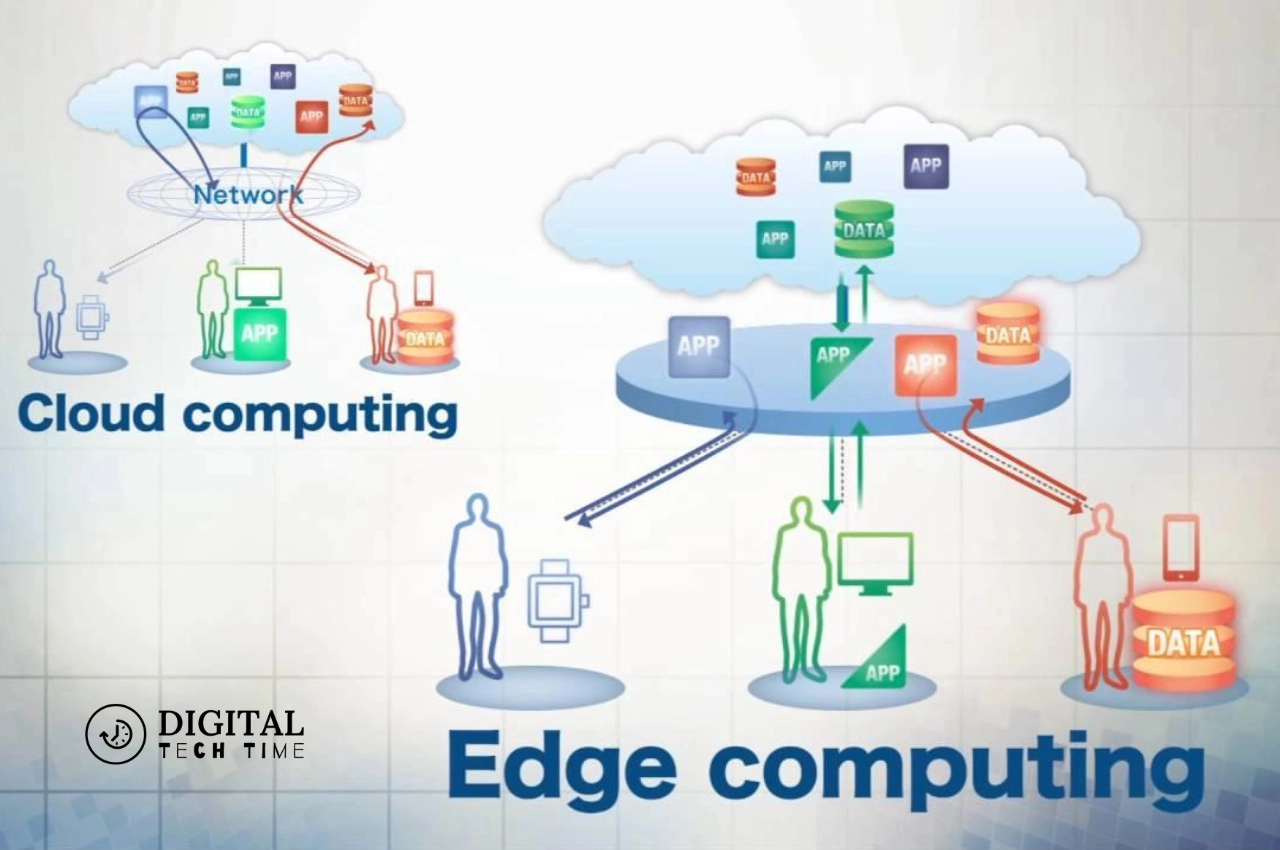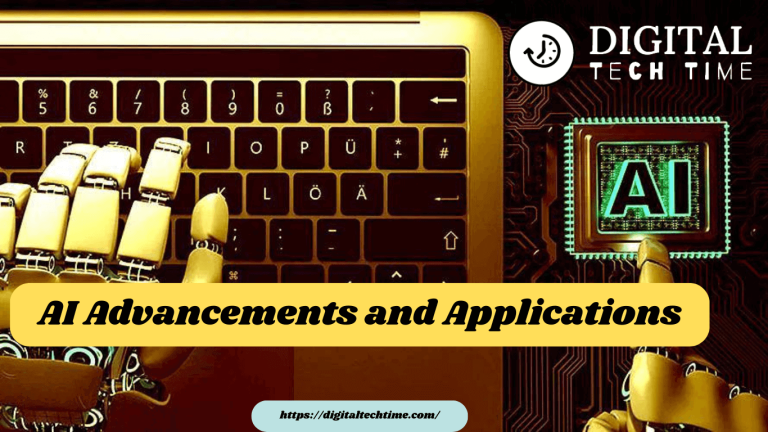CDN vs Edge Computing: Exploring the Key Differences
In today’s digital landscape, where data and applications are the lifeblood of businesses, ensuring seamless content delivery and optimal performance has become paramount. Two technologies, Content Delivery Networks CDN vs Edge Computing, have emerged as robust solutions to address these challenges. While both aim to improve user experiences and enhance application performance, their approaches and capabilities differ. This comprehensive guide will delve into the intricacies of CDNs and Edge Computing, exploring their fundamental differences, benefits, and use cases to help you make an informed decision for your business.
Table of Contents
Understanding Content Delivery Networks (CDNs)
A Content Delivery Network (CDN) is a globally distributed network of servers that caches and delivers static content, such as images, videos, and web pages, from the server closest to the user’s location. By distributing content across multiple servers, CDN reduces latency, improves load times, and enhances the overall user experience.
CDNs work by caching frequently accessed content on servers strategically located around the world. When a user requests content, the CDN redirects the request to the nearest server, minimizing the distance data needs to travel and ensuring faster delivery. This approach mainly benefits websites and applications with high traffic volumes or globally distributed user bases.
Exploring Edge Computing

On the other hand, Edge Computing is a paradigm that brings computation and data storage closer to the source of data generation, typically at the network’s edge. Instead of relying on centralized cloud servers, Edge Computing leverages distributed computing resources, such as edge devices, gateways, and micro data centers, to process and analyze data locally.
By processing data at the edge, Edge Computing reduces the need to transmit large volumes of data to centralized servers, resulting in lower latency, improved responsiveness, and enhanced security. This approach is beneficial in scenarios where real-time decision-making is critical, such as in Internet of Things (IoT) applications, autonomous vehicles, and industrial automation.
Key Differences Between CDN and Edge Computing
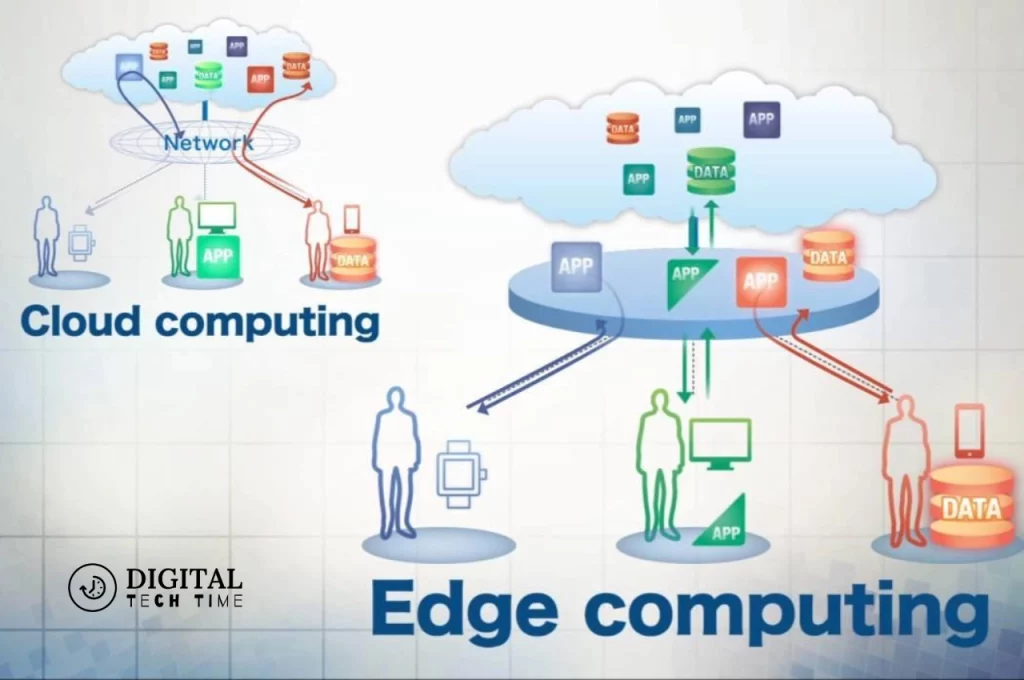
While both CDNs and Edge Computing aim to improve application performance and user experiences, they differ in several key aspects:
- Focus: CDNs primarily focus on delivering static content efficiently, while Edge Computing focuses on processing and analyzing data at the edge, closer to the source.
- Architecture: CDNs employ a distributed network of servers to cache and serve content, while Edge Computing relies on distributed computing resources at the network’s edge.
- Data Processing: CDNs primarily cache and serve static content, while Edge Computing enables data processing and analysis at the edge, closer to the data source.
- Latency Reduction: CDNs reduce latency by serving content from the nearest server, while Edge Computing reduces latency by processing data locally, minimizing the need for data transmission to centralized servers.
- Use Cases: CDNs are widely used for content delivery, such as websites, media streaming, and software distribution, while Edge Computing is more suitable for real-time data processing, IoT applications, and scenarios requiring low latency and local decision-making.
Benefits of CDN
Implementing a CDN offers several compelling benefits for businesses:
- Improved User Experience: CDNs serve content from servers closer to the user’s location, significantly reducing latency and improving load times, resulting in a better overall user experience.
- Increased Scalability: CDNs can handle sudden traffic spikes and high volumes of requests by distributing the load across multiple servers, ensuring consistent performance and availability.
- Reduced Bandwidth Costs: CDNs minimize the need to transfer data over long distances by caching content on servers closer to users, reducing bandwidth costs and improving efficiency.
- Enhanced Security: CDNs can provide additional security features, such as DDoS protection, SSL/TLS encryption, and web application firewalls (WAFs), safeguarding your content and applications from various threats.
- Global Reach: With a globally distributed network of servers, CDNs enable businesses to deliver content and services to users worldwide, ensuring a consistent and high-quality experience regardless of location.
Benefits of Edge Computing
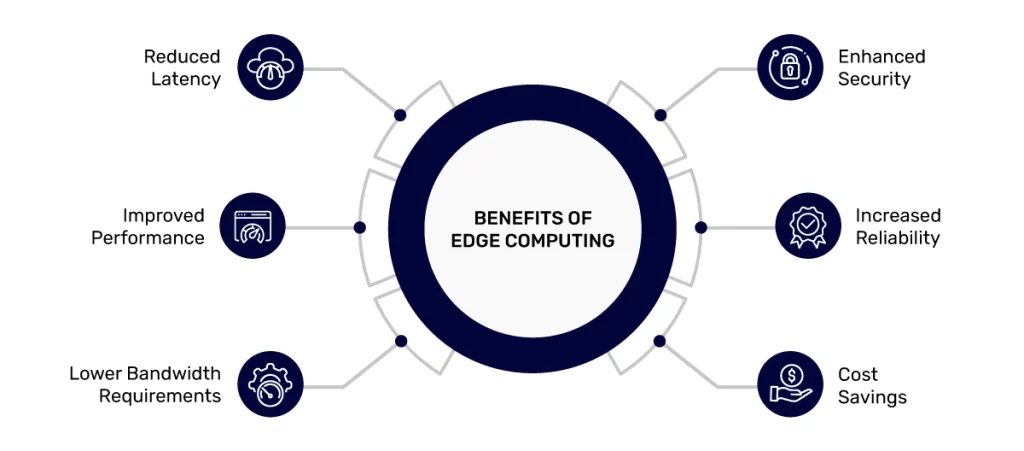
Implementing Edge Computing can provide businesses with several advantages:
- Low Latency: Edge computing significantly reduces latency by processing data locally at the edge, enabling real-time decision-making and responsiveness for time-sensitive applications.
- Improved Efficiency: By processing and filtering data at the edge, Edge Computing reduces the amount of data that needs to be transmitted to centralized servers, improving efficiency and reducing bandwidth costs.
- Enhanced Security: By keeping sensitive data and processing closer to the source, Edge Computing minimizes the risk of data exposure during transmission, improving security and privacy.
- Increased Reliability: Edge Computing’s distributed architecture provides redundancy and fault tolerance, ensuring uninterrupted service even during network disruptions or failures.
- Scalability: Edge Computing allows for flexible and modular scaling, enabling businesses to add or remove computing resources as needed without impacting the overall system’s performance.
Use Cases for CDN
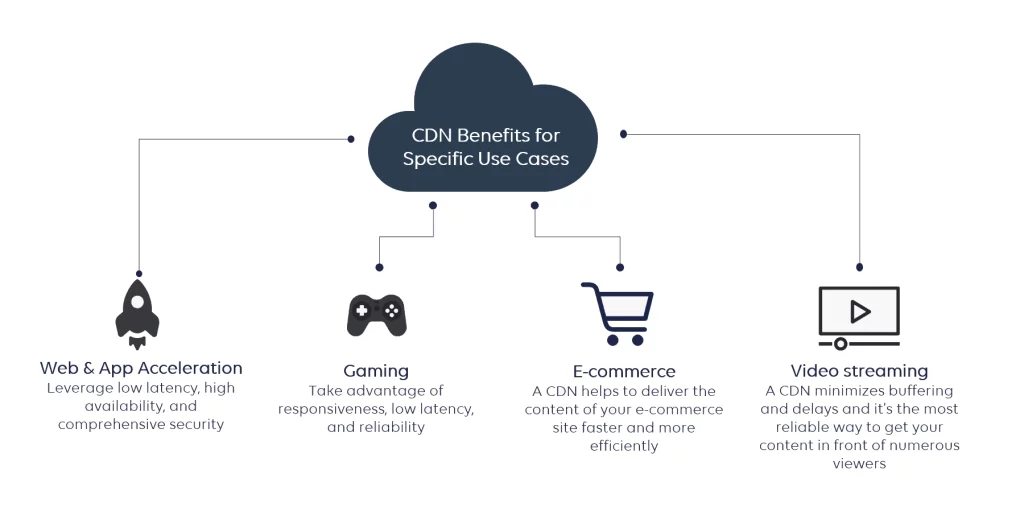
CDNs are widely adopted across various industries and scenarios, including:
- Web Content Delivery: CDNs are extensively used for delivering static web content, such as HTML pages, images, CSS, and JavaScript files, improving website load times and enhancing user experiences.
- Media Streaming: CDNs are crucial in delivering high-quality video and audio content, ensuring smooth streaming experiences for users worldwide.
- Software Distribution: Software companies leverage CDNs to distribute software updates, patches, and installers efficiently, minimizing download times and improving user satisfaction.
- E-commerce Platforms: Online retailers utilize CDNs to serve product images, videos, and other static content, ensuring fast load times and improving conversion rates.
- Mobile Applications: CDNs deliver mobile app content, updates, and media assets, optimizing performance and user experiences across various devices and networks.
Use Cases for Edge Computing
Edge Computing finds applications in a wide range of scenarios, including:
- Internet of Things (IoT): Edge Computing enables real-time data processing and decision-making for IoT devices and sensors, enabling applications such as predictive maintenance, remote monitoring, and smart home automation.
- Autonomous Vehicles: By processing data at the edge, autonomous vehicles can make real-time decisions and respond to changing conditions, ensuring safety and optimizing performance.
- Industrial Automation: Edge Computing is crucial in industrial environments. It enables real-time monitoring, control, and optimization of manufacturing processes, reducing downtime and improving efficiency.
- Intelligent Cities: Edge Computing is vital in innovative city initiatives, enabling real-time data processing for applications like traffic management, public safety, and environmental monitoring.
- Healthcare: Edge Computing can facilitate real-time medical data analysis, enabling remote patient monitoring, telemedicine, and faster diagnosis and treatment.
CDN vs Edge Computing: Which is Right for Your Business?
Choosing between CDN and Edge Computing depends on your specific business requirements, use cases, and the nature of your applications. Here are some factors to consider:
- Content Delivery vs. Data Processing: A CDN would be the ideal choice if your primary goal is to deliver static content efficiently to a global audience. However, Edge Computing would be more suitable if you require real-time data processing, analysis, and decision-making at the edge.
- Latency Requirements: If your applications demand low latency and real-time responsiveness, Edge Computing would be the better option. It processes data locally, minimizing the need for data transmission to centralized servers.
- Data Volume and Bandwidth: If you need to handle large volumes of data or have bandwidth constraints, Edge Computing can help reduce the amount of data transmitted, improving efficiency and reducing costs.
- Security and Privacy: If you deal with sensitive data or have strict privacy requirements, Edge Computing can provide enhanced protection by keeping data and processing closer to the source, minimizing the risk of exposure during transmission.
- Scalability and Flexibility: CDNs and Edge Computing offer scalability, but Edge Computing provides more flexibility regarding modular scaling and resource allocation based on specific application requirements.
It’s important to note that CDNs and Edge Computing are not mutually exclusive; many businesses leverage both technologies to optimize their application performance and user experiences.
Read Also: The Role of Coding in Cybersecurity Careers
Frequently Asked Questions
What is the difference between a CDN and Edge Computing?
A CDN (Content Delivery Network) is a globally distributed network of servers that caches and delivers static content, such as images, videos, and web pages, from the server closest to the user’s location. On the other hand, Edge Computing brings computation and data storage closer to the source of data generation, enabling real-time data processing and decision-making at the network’s edge.
When should I use a CDN?
CDNs are ideal for businesses that need to efficiently deliver static content to a global audience, such as websites, media streaming platforms, and software distribution services. They improve load times, reduce latency, and enhance user experience.
When should I use Edge Computing?
Edge Computing is well-suited for scenarios that require real-time data processing, analysis, and decision-making at the edge, such as Internet of Things (IoT) applications, autonomous vehicles, industrial automation, and innovative city initiatives. By keeping data and processing closer to the source, Edge Computing minimizes latency, improves efficiency, and enhances security.
Can I use both CDN and Edge Computing together?
Yes, CDNs and Edge Computing can be used together complementary. For example, a business could leverage a CDN to deliver static content efficiently while utilizing Edge Computing for real-time data processing and decision-making at the edge.
How do CDNs and Edge Computing differ in terms of security?
CDNs can provide additional security features, such as DDoS protection, SSL/TLS encryption, and web application firewalls (WAFs), to safeguard content and applications. Edge Computing enhances security by keeping sensitive data and processing closer to the source, minimizing the risk of data exposure during transmission to centralized servers.
Conclusion
In the ever-evolving digital landscape, businesses must adopt technologies that enable efficient content delivery, real-time data processing, and optimal user experiences. Content Delivery Networks (CDNs) and Edge Computing offer potent solutions, but their approaches and capabilities differ.
CDNs excel at delivering static content efficiently to a global audience, improving load times, reducing latency, and enhancing user experiences. On the other hand, Edge Computing brings computation and data storage closer to the source, enabling real-time data processing, analysis, and decision-making at the edge.

